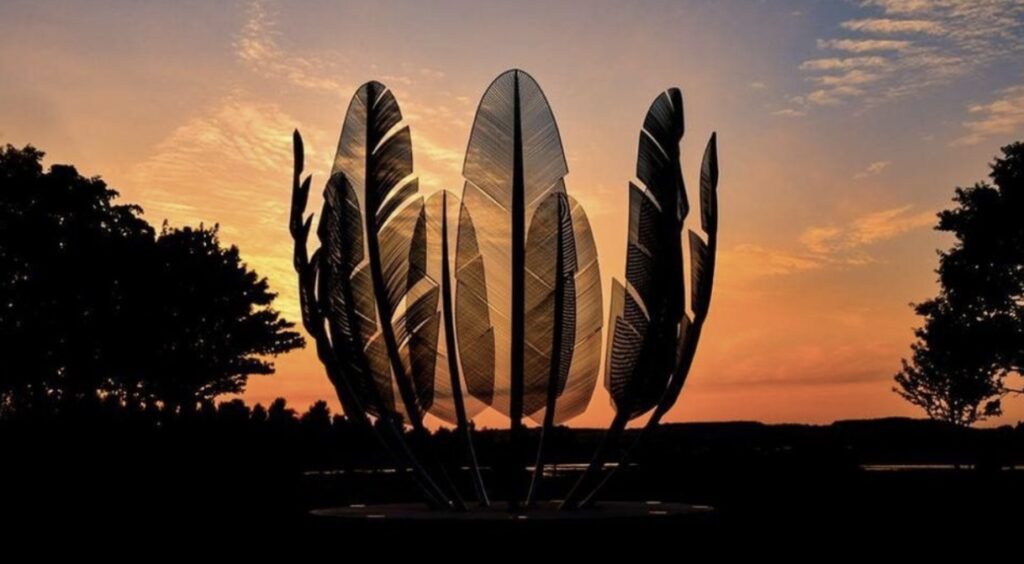Almost two centuries ago, starting in 1831, the Choctaw Native Americans were one of the first tribes to be forcibly removed and relocated from their land in the Southeastern United States by the US Government. They suffered the great loss of the land – their home – that they lived off for generations. As they made the treacherous journey westward on what is now remembered as the Trail of Tears, they experienced hunger, death, and collective suffering with no one to lean on but themselves.
Thousands of miles away, in 1845, crops in Ireland began dying in large numbers due to infestation of P. Infestans, otherwise known as the potato late blight fungus. For the next seven years, the potato famine was responsible for the death of over one million Irish people either directly through starvation or due to diseases brought about by malnutrition. The famine also caused many Irish families to relocate to other countries in order to survive.
The early days of global media allowed people around the world to hear about the dire situation the Irish were facing. When the Choctaw Natives learned about the turmoil of the Irish people, they resonated strongly with the reality of losing one’s home, way of life, and dealing with the consequences of famine brought upon by factors beyond your control. Today, the Choctaw Nation recalls the empathetic feeling, stating that “a great empathy was felt when they heard such a similar tale from across the ocean.” The Choctaw people raised $170 dollars, which is equivalent to $5000 today, and sent it to the working class families of Ireland who were unable to feed their children. The Quaker community in Ireland was responsible for the distribution of the money the Choctaw sent. And thus began a beautiful relationship that has spanned the test of time.
Covid-19 hit Navajo Nation and Hopi Reservation hard. At the height of the pandemic, thousands of new cases would arise every day and the lives of over one hundred people would be claimed by the end of the week. Epidemiologists have attributed the rapid spread of Covid on these reservations to the high prevalence of diseases like diabetes, the scarcity of running water, and the fact that many Native American families have multiple generations of people living under the same roof. Geographically, the Hopi Reservation is also surrounded by Navajo Nation, making this a hotspot for viral promulgation. Recalling the selfless generosity of the Choctaw people, hundreds of Irish individuals have donated to a fundraiser for the Navajo and Hopi tribes, collectively raising about $2 million. The money was used to provide the Navajo and Hopi people with clean water, food and health supplies.
The friendship that has formed between the Irish and the Choctaw goes beyond financial support. In 1990, only seven years after the Choctaw were able to ratify a constitution and reestablish their government, Choctaw leaders visited County Mayo, Ireland to participate in the first annual “Famine Walk”, commemorating the desperate Irish men and women doing the same walk in 1848 to emphasize the calamity of the potato famine to their landlords. In the same spirit, Irish leaders and citizens visited Choctaw Nation in 1992 to trek the original Trail of Tears from Mississippi. There have been more visits and thank yous exchanged over the years, including Ireland’s prime minister, Leo Varadkar, describing the support the Irish received from the Choctaw to be a sacred memory. But perhaps one of the most beautiful gestures is a sculpture known as “Kindred Spirits” built in Bailick park in Middletown, County Cork, Ireland. The sculpture, a glistening Halo of Feathers, symbolizes the continued friendship of the Choctaw and Irish. Its circular orientation serves as a reminder that what goes around truly does come around.
Prof. Diarmaid Ferriter, a historian at University College Dublin and co-author of “The Irish Famine” told the New York Times that the act “..showed how far the famine resonated that it reached people 4,000 miles away who had themselves recently suffered terrible deprivation and clearance from their land. There is a belief that the famine has never been forgotten here, and it has made Irish people more likely to make common cause with other marginalized people.”
The alliance of the Choctaw and Irish was born from two communities, albeit at opposite ends of the globe, sharing similar struggles. They were forced from their homes and thrust into famine, starvation, and isolation. Yet the Choctaw, with the little they had, still chose to help the Irish. And the Irish never forgot. Their bond is a testament to the fact that money and land are temporary, fluctuating factors in our lives. The true constants are our relationships – our family, our friends, and our communities. In times of suffering, these bonds are vital and they, evidently, are very hard to break. The “Kindred Spirits” structure also represents new beginnings. In 2019, the first student to receive the Choctaw Ireland Scholarship began her higher education in Ireland, carrying the mantle of Irish and Native American kinship forward and cementing the value of unity and friendship.

